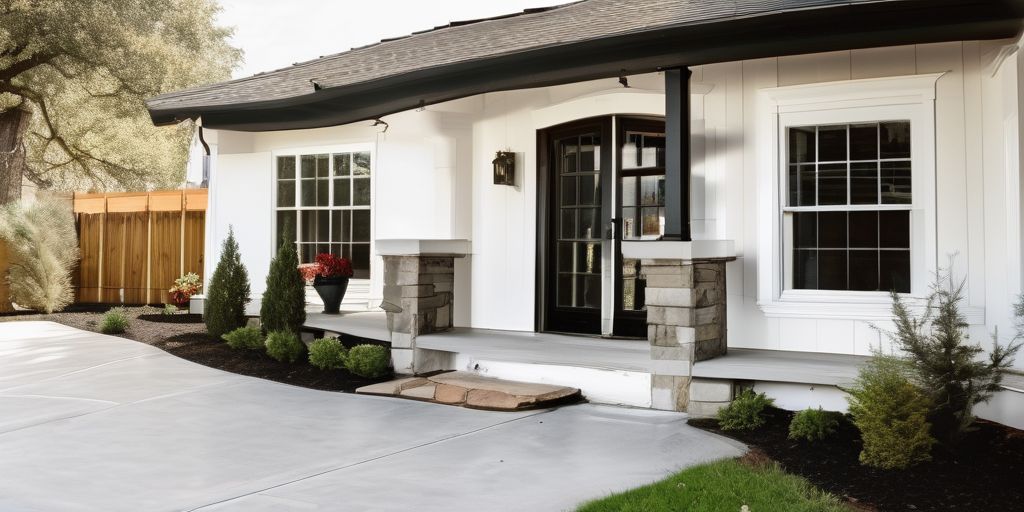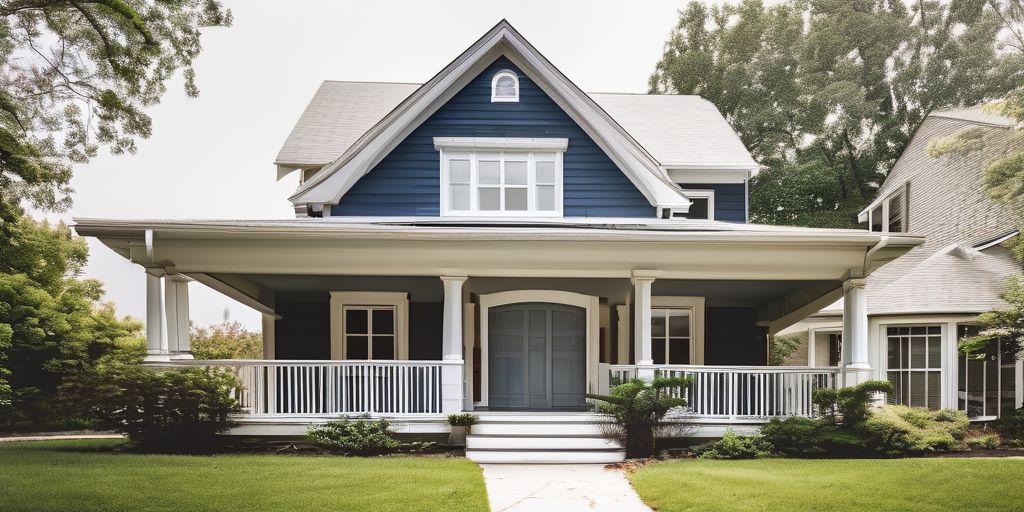Painting aluminum siding can breathe new life into the exterior of your home, but it requires careful preparation and the right techniques to achieve a long-lasting and professional-looking finish. Whether you’re a DIY enthusiast or a homeowner looking to refresh your house’s appearance, this guide will provide you with essential tips and techniques for painting aluminum siding effectively.
Key Takeaways
- Thorough preparation, including cleaning and repairing the surface, is crucial for a successful paint job on aluminum siding.
- Choosing the right type of paint and tools specifically designed for aluminum can significantly impact the durability and appearance of the finish.
- Mastering painting techniques, such as using brushes and rollers effectively and applying primer correctly, ensures a smooth and even coat.
- Timing your painting project according to weather conditions and working in the shade can prevent issues like paint drying too quickly or uneven application.
- Regular maintenance, including cleaning and touch-ups, will extend the life of your painted aluminum siding and keep it looking fresh.
Preparing Your Aluminum Siding for Painting
Before you start painting, it’s crucial to prepare your aluminum siding properly. This ensures that the paint adheres well and lasts longer. Here are the steps you need to follow:
Cleaning the Surface Thoroughly
- Remove dirt and grime by hand-washing the siding with soap and warm water.
- Scrub away any mildew with a solution of three parts water to one part household bleach.
- For the best results, consider power washing the siding to avoid the hassles of painting chalky aluminum siding.
Repairing Any Damage
- Scrape off any peeling and flaking paint.
- Chisel out any old caulk lines and apply new ones.
- If you have small dents, push them out before repainting. For deeper dents or holes, replace the affected section.
Protecting Surrounding Areas
- Trim any plants back to make room for you and your ladder.
- Put down drop cloths to protect your plants from errant paint.
- Cover windows, doors, and other areas you don’t want to paint with plastic sheeting or painter’s tape.
With the right preparation—including patchwork, cleaning, and primer—aluminum siding can be revitalized with a fresh, beautiful coat of paint.
Choosing the Right Paint and Tools
When it comes to painting aluminum siding, choosing the right paint and tools is crucial for a successful project. Here are some tips to help you make the best choices.
Selecting the Best Paint for Aluminum
Selecting the right paint is essential for a long-lasting finish. Look for exterior acrylic-latex paint, which is known for its durability and flexibility. Oil-based primers are also recommended to ensure proper adhesion and to prevent peeling.
Essential Tools You’ll Need
Having the right tools can make a significant difference in the quality of your paint job. Here’s a list of essential tools you’ll need:
- Airless paint sprayer
- Paint roller and roller pads
- Extension pole
- Kitchen gloves
- Extension ladder or 6-foot ladder
- Caulking gun
- Putty knife
- Mask
- Goggles
- Abrasive scrub pad
- Nylon bristle brush
Safety Gear and Precautions
Safety should always be a priority when painting. Make sure to have the following safety gear:
- Gloves
- Mask
- Eye protection
- Ladder
- Garden hose
- Power washer
Proper tools, high-quality paint, and techniques are essential for successful aluminum siding painting projects.
By following these guidelines, you can ensure a smooth and efficient painting process, resulting in a beautiful and long-lasting finish for your aluminum siding.
Mastering the Painting Technique
Using Brushes and Rollers Effectively
When painting aluminum siding, the choice between a brush and a roller can significantly impact the final result. With a brush, you will have little striations in the paint. The hairs on the brush leave a mark, so the key is to make them all go the same way and to smooth out the paint by dry brushing at the edges of your painting area. Half the battle in keeping the paint smooth is controlling how much you are working with. If you put too much paint on all at once, it will start to thicken up before you can get it all spread out and smoothed out. Once it gets thick, it gets hard to control.
Applying Primer Correctly
Applying primer is a crucial step in ensuring that your paint adheres well to the aluminum siding. Here are the steps to follow:
- Clean the surface thoroughly to remove any dirt or debris.
- Sand the surface lightly to create a better grip for the primer.
- Apply the primer in long, even strokes, making sure not to overdo it. If your primer is dripping, then you have too much.
- Allow the primer to dry completely before applying the topcoat.
Techniques for a Smooth Finish
Achieving a smooth finish requires attention to detail and the right technique. Here are some tips:
- Work from the top down to eliminate dripping paint from ruining your hard work.
- Periodically freshen up your brushes. When the paint is getting thick and heavy on your brush, dip it in some water, then wipe off the water on some newspaper. Your brush will be much easier to use after you do this.
- Proper brush technique can give your painted aluminum siding a very nice texture. If you don’t know good brush technique, there are several good videos on YouTube.
Restoring shine to Burlington’s weathered aluminum siding involves proper cleaning, high-quality paint, and maintenance. Tips include cleaning, sanding, and pressure washing for a lasting finish.
Timing Your Painting Project
Best Weather Conditions for Painting
Choosing the right day to paint is crucial. Schedule your painting for a day that is mild and overcast. Hot or cold temperatures can affect how quickly paint dries and its adhesion. Aim for days that are forecasted to be above 60 degrees Fahrenheit, as most latex paint won’t properly dry in colder temperatures. Also, pay attention to nighttime temperatures to ensure the paint dries properly. Avoid painting on rainy or windy days.
Working in the Shade
When priming or painting, begin on a portion that is shaded from the sun. Painting in direct sunlight can cause cracks and other issues. Here are some tips:
- Start early in the morning or later in the afternoon when the sun is not at its peak.
- Use temporary shades or tarps to create shaded areas if necessary.
- Always follow the shade as you work around the house.
Seasonal Considerations
Different seasons offer various challenges and benefits for painting aluminum siding. Here’s a quick guide:
| Season | Pros | Cons |
|---|---|---|
| Spring | Mild temperatures, less humidity | Unpredictable rain |
| Summer | Longer daylight hours | High heat and humidity |
| Fall | Stable temperatures, less intense sunlight | Shorter days, potential for early frost |
| Winter | Not recommended | Cold temperatures, snow, and ice |
Proper timing, surface preparation, paint selection, and maintenance are essential for a durable aluminum siding paint job in varying temperatures.
By considering these factors, you can ensure a smooth and lasting finish for your aluminum siding.
Maintaining Your Painted Aluminum Siding
Regular Cleaning Tips
To keep your painted aluminum siding looking fresh, regular cleaning is essential. Washing siding with a pressure washer before painting will help to ensure a long life for the paint job. Learn to do it properly to avoid damage. Here are some tips:
- Use a garden hose with a spray nozzle for routine cleaning.
- Avoid using harsh chemicals; mild soap and water work best.
- For stubborn dirt, a soft brush can be effective.
Touch-Up Techniques
Over time, you may notice small areas where the paint has chipped or faded. Touching up these spots can extend the life of your paint job. Here’s how to do it:
- Clean the area thoroughly to remove any dirt or chalking.
- Lightly sand the edges of the chipped paint to smooth them out.
- Apply a primer if the bare aluminum is exposed.
- Use a small brush to apply the matching paint.
Long-Term Care Strategies
Maintaining your painted aluminum siding involves more than just cleaning and touch-ups. Consider these long-term care strategies:
- Inspect your siding annually for any signs of damage or wear.
- Reapply a protective sealant every few years to keep the paint looking vibrant.
- Trim back any trees or bushes that are close to the siding to prevent scratches and mildew.
Combining spray and brush techniques ensures a durable and attractive finish, maximizing the efficiency and quality of your exterior paint job.
Maintaining your painted aluminum siding is essential to keep your home looking fresh and vibrant. Regular cleaning and timely touch-ups can extend the life of your paint job and protect your siding from the elements. For expert advice and professional services, visit our website today and discover how we can help you maintain the beauty of your home.
Conclusion
Painting aluminum siding can seem like a daunting task, but with the right preparation, tools, and techniques, it can be a rewarding DIY project that breathes new life into your home’s exterior. Remember to thoroughly clean and prep the surface, choose the appropriate paint, and apply it with care to achieve a professional-looking finish. By following the tips and advice shared in this article, you’ll be well on your way to transforming your aluminum siding and enhancing your home’s curb appeal. Happy painting!
Frequently Asked Questions
What type of paint should I use for aluminum siding?
You should use 100% acrylic latex paint, which adheres well to aluminum siding and provides a durable, long-lasting finish.
Do I need to use a primer before painting aluminum siding?
Yes, applying a primer is essential as it helps the paint adhere better and provides an even surface for the topcoat.
Can I use a pressure washer to clean my aluminum siding before painting?
It’s not recommended to use a pressure washer as it can damage the siding. Instead, use warm soapy water and a brush to clean the surface thoroughly.
What are the best weather conditions for painting aluminum siding?
The best conditions are mild temperatures, low humidity, and overcast skies. Avoid painting in direct sunlight or during extreme weather conditions.
How often should I repaint my aluminum siding?
Typically, aluminum siding should be repainted every 5-10 years, depending on the quality of the previous paint job and environmental factors.
What safety gear should I use when painting aluminum siding?
Wear safety goggles, gloves, and a mask to protect yourself from fumes and paint splatters. Also, use a sturdy ladder and ensure it is placed on a stable surface.





